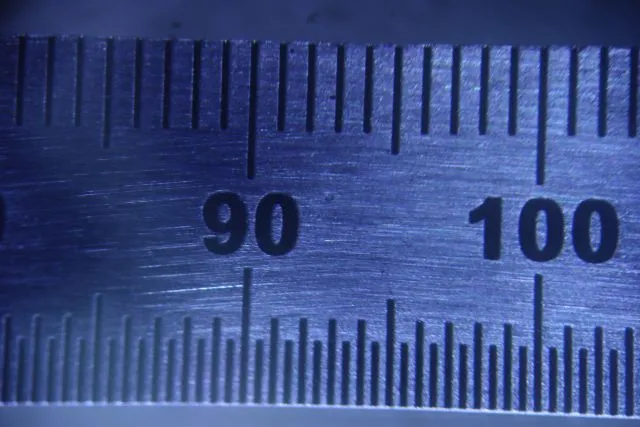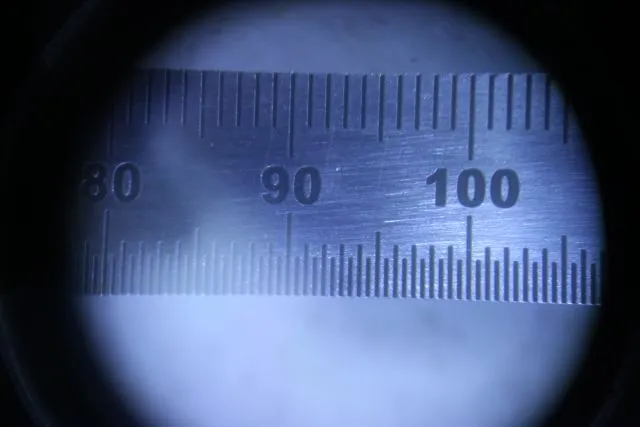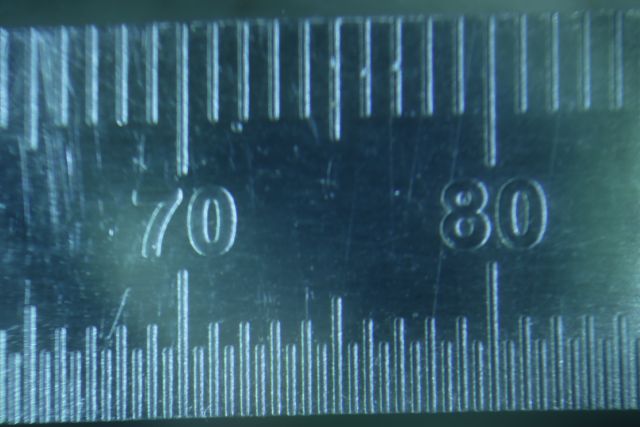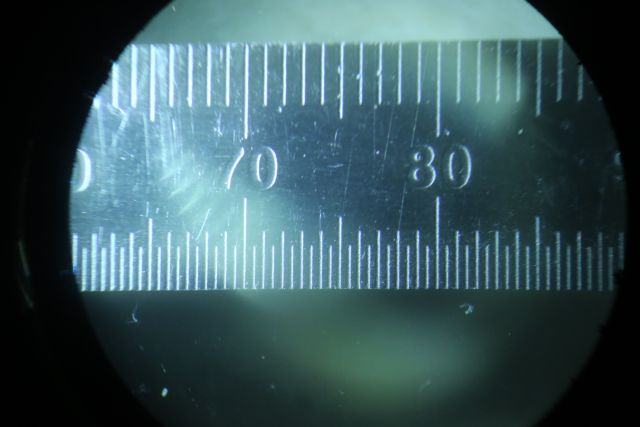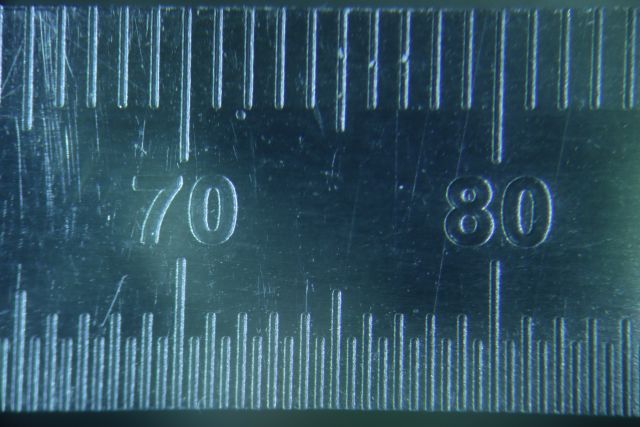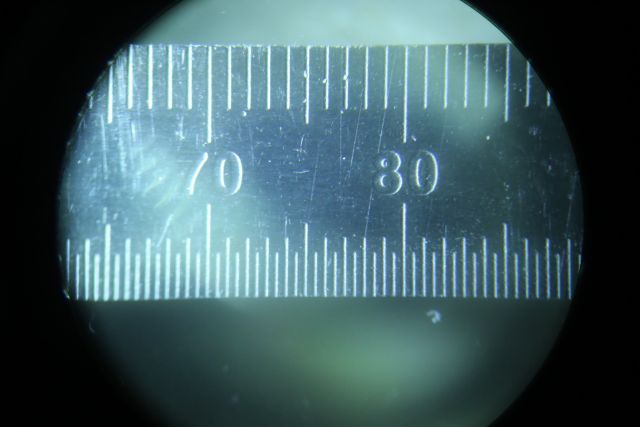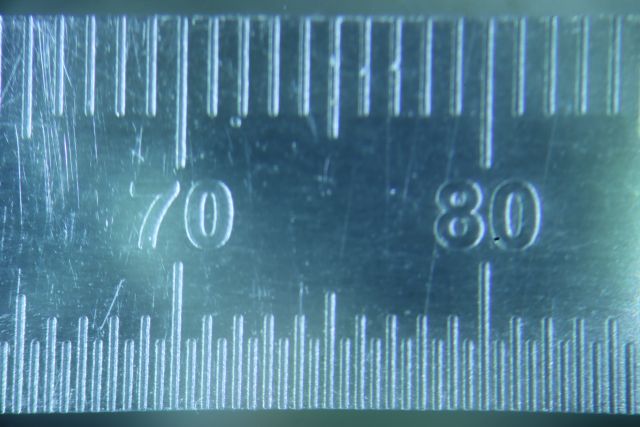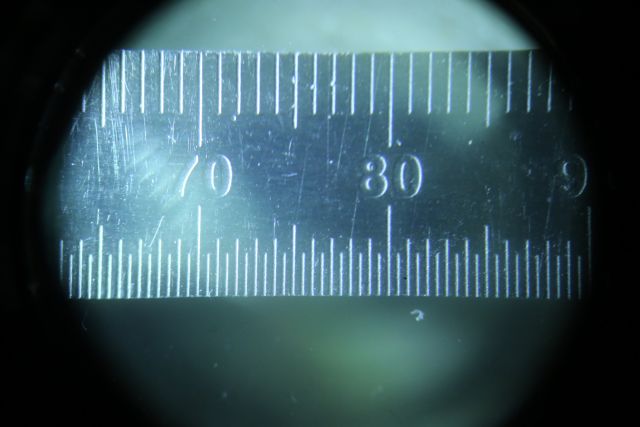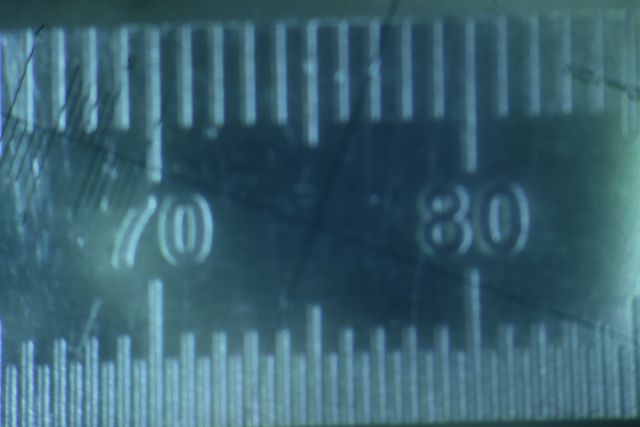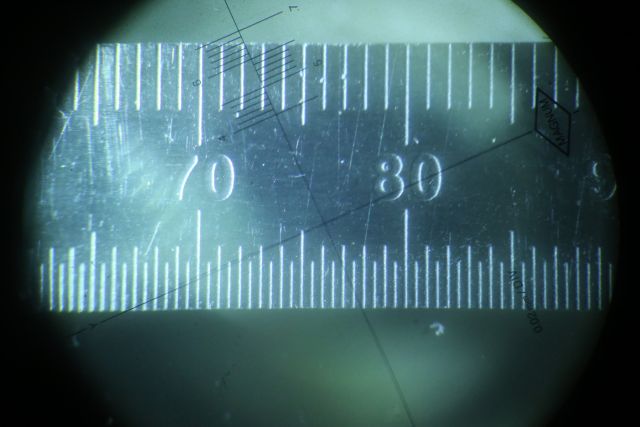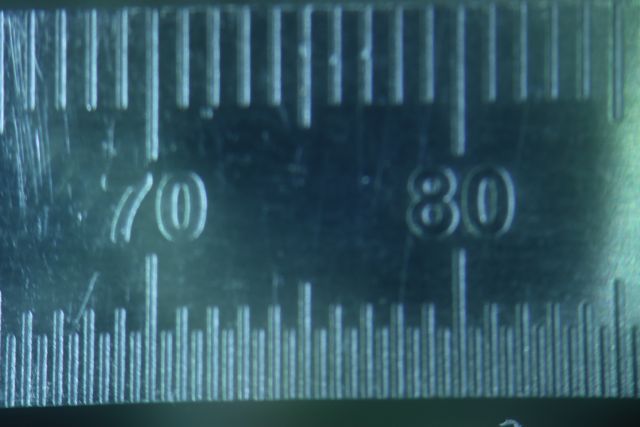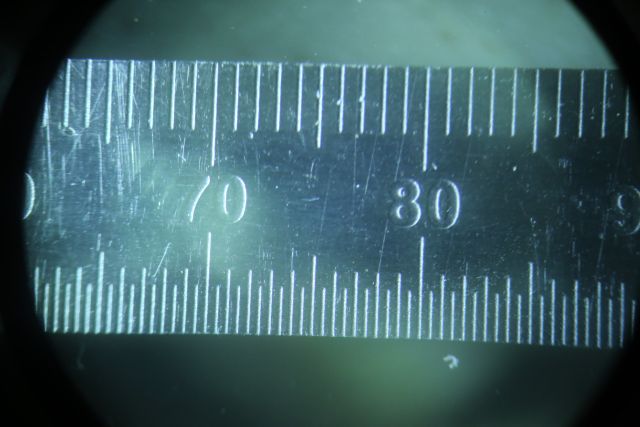back

Afocal photomicroscopy
Most microscopes lack photo ports; in particular, stereo microscopes typically lack photo ports, and those photo ports don't do stereo. Standard microscope eyepieces work with intermediate image, focussed by objectives or tube lens 10mm down eye tubes. Without shortened tube to focus on camera sensors, as for e.g. C-mount, using camera lens focussed near infinity over eyepiece exit pupil can work well. 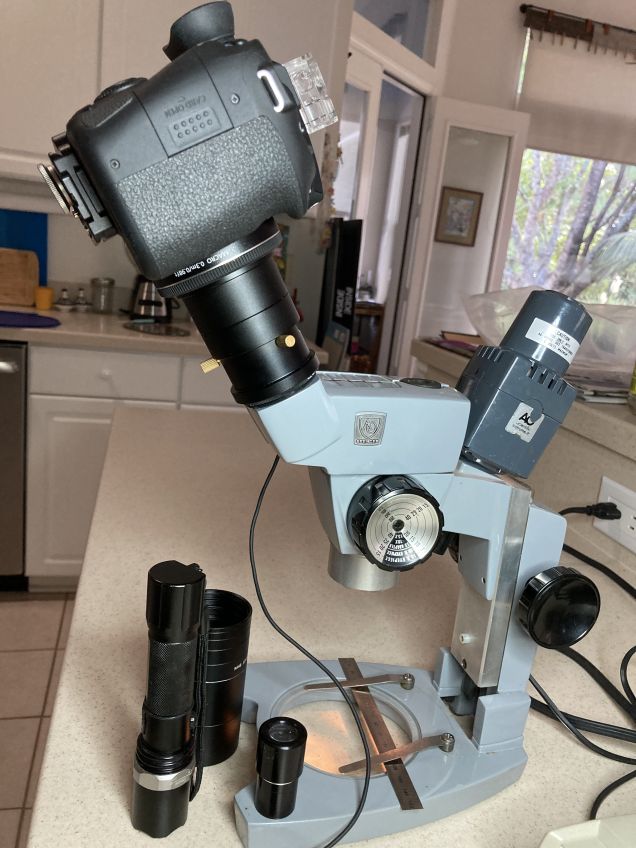
step-down ring (green arrow) adapts filter thread to 48mm extension tube: 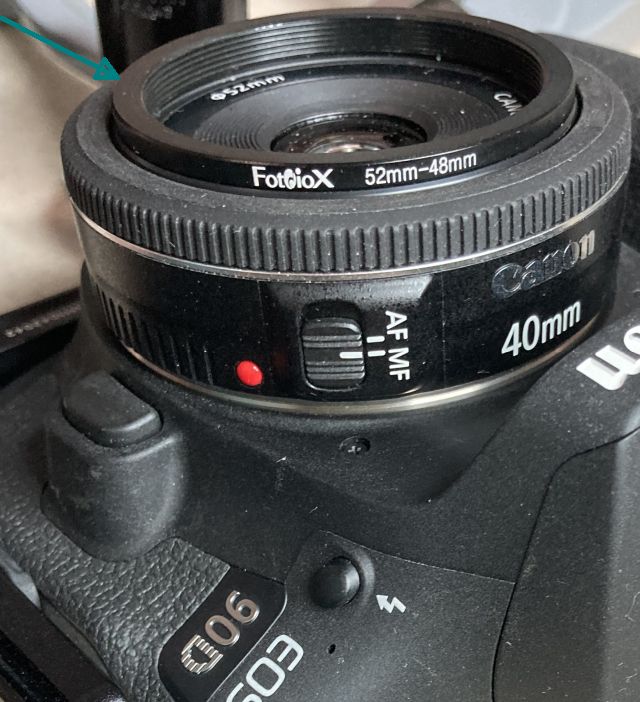
40mm lens with 10x oculars for APS-C vs 35mm
Discussion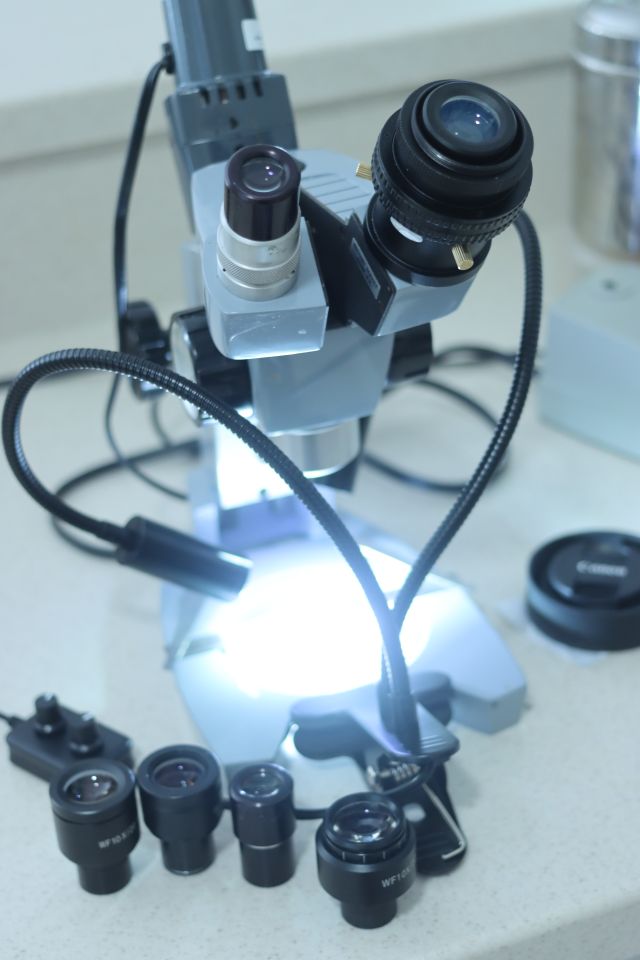 This investigates afocal camera image FoV variation with ocular FoV, NOT image quality. Cycloptic rack changes affect scale much faster than focus; focus changes were only by M42 helicoid pancake-to-ocular lens spacing and EF 40x STM focus ring. Nikon CFWN 10x/20 diopter adjustment was evidently quite mismatched to others. 50mm lens on 35mm A7R afocal with 10x/22 ocularI inherited an old MD ROKKOR-X 50mm 1:1.7;its front lens in recessed about 10mm behind 55mm filter thread. 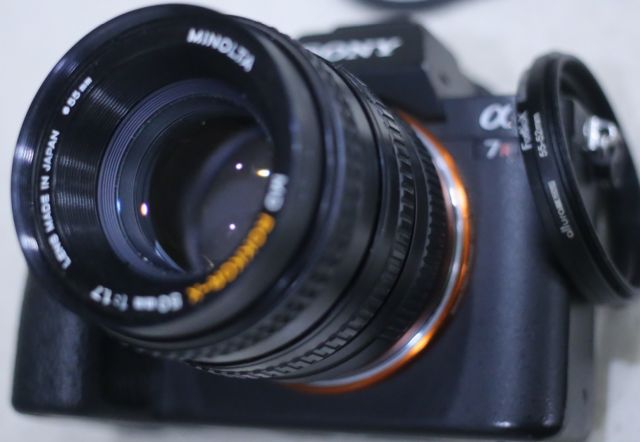 Adapted to a digital camera with 35mm sensor, with an ocular protruding most of the way into that recess: 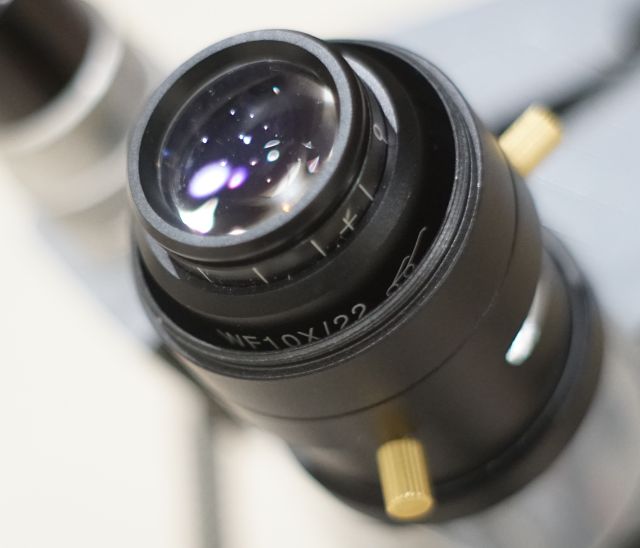
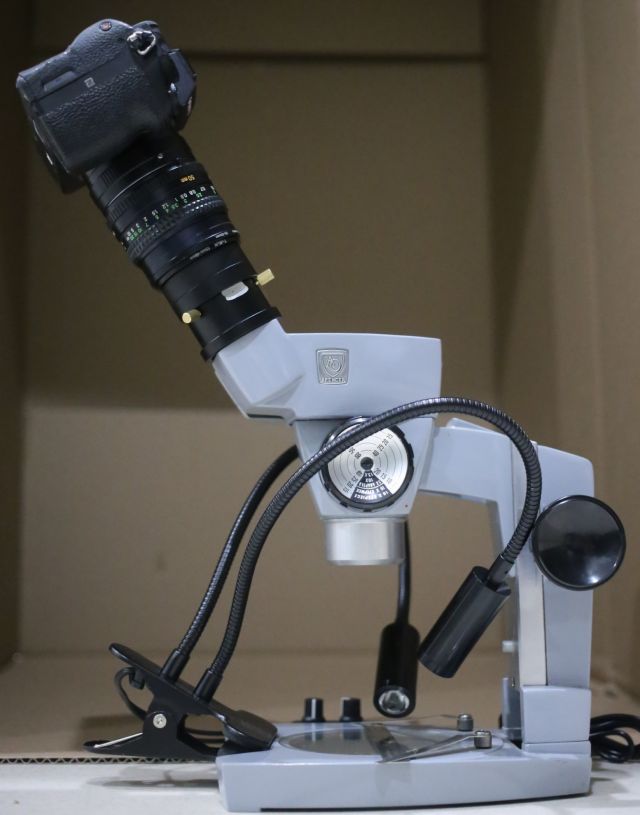 10x/22 ocular fills 35mm sensor with negligible corner vignetting: 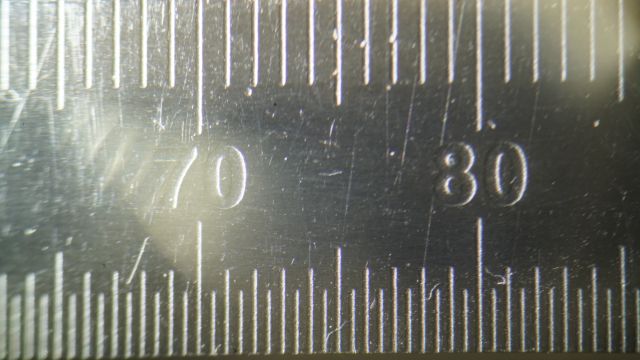 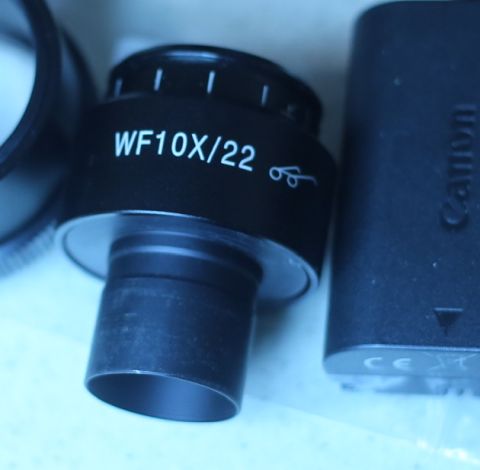
| ||||||||||||||
|
maintained by blekenbleu |
